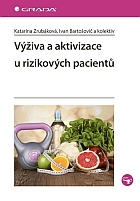Nursing Students' Educational Frameworks and Competency Areas Related to Patient Safety: An Integrative Review
DOI:
https://doi.org/10.46585/hc.2023.2.2441Keywords:
nursing students; educational frameworks; areas of education; patient safetyAbstract
Background: The topic of patient safety is not explicitly specified in undergraduate nursing education in many countries. Aim: To identify educational frameworks in the available relevant literature and summarise educational domains related to patient safety for nursing students. Methods: Integrative literature review. The search was conducted in three scientific databases namely PubMed, Scopus and ProQuest in November 2022. A total of 410 records were retrieved. The screening process was reflected through the PRISMA diagram. The search resulted in six studies from which the educational domains were extracted, and the thematic summarization was subsequently performed. Results: Nursing educational frameworks were divided into general and specific. The common feature of all frameworks is the educational domains related to the provision of safe care. Based on their integration into the curricula, nursing students should be educated in the following areas: safety; patient safety culture; teamwork; communication; evidence-based practice; patient-centered care; adverse events; human and system factors; awareness; quality of care; specific problems and others. Conclusion: An integrative review conducted may be useful for incorporating the identified learning domains into undergraduate nursing education. However, the first stage should be a rigorous analysis of the nursing programmes curricula.
Downloads
References
Aiken, L. H., Sloane, D. M., Bruyneel, L., Griffiths, P., & Sermeus, W. (2014). Staffing and education of nurses and hospital mortality in Europe-Authors' reply. Lancet (London, England), 384(9946), 851–852. https://doi.org/10.1016/S0140-6736(14)61482-3
Attree, M., Cooke, H., & Wakefield, A. (2008). Patient safety in an English pre-registration nursing curriculum. Nurse education in practice, 8(4), 239–248. https://doi.org/10.1016/j.nepr.2007.09.003
Ball, J. E., Murrells, T., Rafferty, A. M., Morrow, E., & Griffiths, P. (2014). 'Care left undone' during nursing shifts: associations with workload and perceived quality of care. BMJ quality & safety, 23(2), 116–125. https://doi.org/10.1136/bmjqs-2012-001767
Bergs, J., Peeters, K., Kortleven, I., Creemers, S., Ulenaers, D., Desmedt, M., & Schrooten, W. (2021). Translation and validation of the Dutch version of the health professional education in patient safety survey amongst nursing students in Belgium: A psychometric analysis. PloS one, 16(3), e0247869. https://doi.org/10.1371/journal.pone.0247869
Blegen, M. A., Goode, C. J., Park, S. H., Vaughn, T., & Spetz, J. (2013). Baccalaureate education in nursing and patient outcomes. The Journal of nursing administration, 43(2), 89–94. https://doi.org/10.1097/NNA.0b013e31827f2028
Brennan, T. A., Leape, L. L., Laird, N. M., Hebert, L., Localio, A. R., Lawthers, A. G., Newhouse, J. P., Weiler, P. C., & Hiatt, H. H. (1991). Incidence of adverse events and negligence in hospitalized patients. Results of the Harvard Medical Practice Study I. The New England journal of medicine, 324(6), 370–376. https://doi.org/10.1056/NEJM19910207324060
Buchan, J., Catton, H. A Shaffer, F. A. (2022). Sustain and Retain in 2022 and Beyond: the Global Nursing Workforce and the COVID-19 Pandemic. International Centre on Nurse Migration [online]. Available from: https://www.icn.ch/resources/publications-and-reports/sustain-and-retain-2022-and-beyond
Canadian Patient Safety Institute. (2020). The Safety Competencies: Enhancing Patient Safety Across the Health Professions. 2nd Edition. Edmonton, Alberta: Canadian Patient Safety Insitute. ISBN 978-1-926541-85-3. [online]. Available from:
Cronenwett, L., Sherwood, G., Barnsteiner, J., Disch, J., Johnson, J., Mitchell, P., Sullivan, D. T., & Warren, J. (2007). Quality and Safety Education for Nurses. Nursing outlook, 55(3), 122–131. https://doi.org/10.1016/j.outlook.2007.02.006
Cronin, M. A., & George, E. (2023). The Why and How of the Integrative Review. Organizational Research Methods, 26(1), 168-192. https://doi.org/10.1177/1094428120935507)
Emanuel, L., Berwick, D., Conway, J., Combes, J., Hatlie, M., Leape, L., Reason, J., Schyve, P., Vincent, C., & Walton, M. (2008). What Exactly Is Patient Safety?. In K. Henriksen (Eds.) et. al., Advances in Patient Safety: New Directions and Alternative Approaches (Vol. 1: Assessment). Agency for Healthcare Research and Quality.
European Federation of Nurses Associations. (2015). EFN Guideline for the implementation of Article 31 of the Mutual Recognition of Professional Qualifications
Directive 2005/36/EC, amended by Directive 2013/55/EU. European Federation of Nurses Association [online]. Available from: http://www.efnweb.be/wp-content/uploads/EFN-Competency-Framework-19-05-2015.pdf
European Union Network for Patient Safety. (2010). A General Guide for Education and Training in Patient Safety. European Union Network for Patient Safety (EUNetPaS) [online]. Available from: https://www.eu-patient.eu/globalassets/projects/eunetpas/guidelines_final_22-06-2010.pdf
Frank, J. R. & Brien, S. The safety competencies: Enhancing patient safety across the health professions. Ottawa, ON: Canadian Patient Safety Institute. [online]. 2008 [cit. 2022-11-16]. Available from: https://simulation.mcmaster.ca/documents/Safety_Competencies.pdf
Institute of Medicine (US) Committee on Quality of Health Care in America, Kohn, L. T., Corrigan, J. M., & Donaldson, M. S. (Eds.). (2000). To Err is Human: Building a Safer Health System. National Academies Press (US).
International Council of Nurses. 2022. Position Statement. International Council of Nurses. [online]. Available from: https://www.icn.ch/sites/default/files/inline-files/D05_Patient_Safety_0.pdf
King, J., & Anderson, C. M. (2012). The Canadian interprofessional patient safety competencies: their role in health-care professionals' education. Journal of patient safety, 8(1), 30–35. https://doi.org/10.1097/PTS.0b013e3182468138
Kirwan, M., Matthews, A., & Scott, P. A. (2013). The impact of the work environment of nurses on patient safety outcomes: a multi-level modelling approach. International journal of nursing studies, 50(2), 253–263. https://doi.org/10.1016/j.ijnurstu.2012.08.020
Kirwan, M., Riklikiene, O., Gotlib, J., Fuster, P., & Borta, M. (2019). Regulation and current status of patient safety content in pre-registration nurse education in 27 countries: Findings from the Rationing – Missed nursing care (RANCARE) COST Action project. Nurse education in practice, 37, 132–140. https://doi.org/10.1016/j.nepr.2019.04.013
Lee, N. J., An, J. Y., Song, T. M., Jang, H., & Park, S. Y. (2014). Psychometric evaluation of a patient safety competency self-evaluation tool for nursing students. The Journal of nursing education, 53(10), 550–562. https://doi.org/10.3928/01484834-20140922-01
Lee, S. E., Dathinten, V. S., & Do, H. (2020). Patient safety education in pre-registration nursing programmes in South Korea. International nursing review, 67(4), 512–518. https://doi.org/10.1111/inr.12630
Letourneau, R. M., & McCurry, M. K. (2019). Testing the Nursing Quality and Safety Self-Inventory. Journal for nurses in professional development, 35(5), 275–280. https://doi.org/10.1097/NND.0000000000000556
Levett-Jones, T., Andersen, P., Bogossian, F., Cooper, S., Guinea, S., Hopmans, R., McKenna, L., Pich, J., Reid-Searl, K., & Seaton, P. (2020). A cross-sectional survey of nursing students' patient safety knowledge. Nurse education today, 88, 104372. Advance online publication. https://doi.org/10.1016/j.nedt.2020.104372
Lukewich, J., Edge, D. S., Tranmer, J., Raymond, J., Miron, J., Ginsburg, L., & VanDenKerkhof, E. (2015). Undergraduate baccalaureate nursing students' self-reported confidence in learning about patient safety in the classroom and clinical settings: an annual cross-sectional study (2010–2013). International journal of nursing studies, 52(5), 930–938.
https://doi.org/10.1016/j.ijnurstu.2015.01.010
Mansour M. (2012). Current assessment of patient safety education. British journal of nursing (Mark Allen Publishing), 21(9), 536–543. https://doi.org/10.12968/bjon.2012.21.9.536
Mansour, M. J., Al Shadafan, S. F., Abu-Sneineh, F. T., & AlAmer, M. M. (2018). Integrating Patient Safety Education in the Undergraduate Nursing Curriculum: A Discussion Paper. The open nursing journal, 12, 125–132. https://doi.org/10.2174/1874434601812010125
Morello, R. T., Lowthian, J. A., Barker, A. L., McGinnes, R., Dunt, D., & Brand, C. (2013). Strategies for improving patient safety culture in hospitals: a systematic review. BMJ quality & safety, 22(1), 11–18. https://doi.org/10.1136/bmjqs-2011-000582
Nieva, V. F., & Sorra, J. (2003). Safety culture assessment: a tool for improving patient safety in healthcare organizations. Quality & safety in health care, 12 Suppl 2 (Suppl 2), ii17–ii23. https://doi.org/10.1136/qhc.12.suppl_2.ii17
Page, M. J., McKenzie, J. E., Bossuyt, P. M., Boutron, I., Hoffmann, T. C., Mulrow, C. D., Shamseer, L., Tetzlaff, J. M., Akl, E. A., Brennan, S. E., Chou, R., Glanville, J., Grimshaw, J. M., Hróbjartsson, A., Lalu, M. M., Li, T., Loder, E. W., Mayo-Wilson, E., McDonald, S., et al. (2020). The PRISMA 2020 statement: an updated guideline for reporting systematic reviews. BMJ (Clinical research ed.), 372, n71. https://doi.org/10.1136/bmj.n71
Sherwood, G. & Barnsteiner, J., eds. (2012). Quality and safety in nursing: a competency approach to improving outcomes, 3rd edition. Hoboken: Wiley-Blackwell, ISBN 978-1-119-68423-7
Tella, S., Smith, N. J., Partanen, P., & Turunen, H. (2015). Learning Patient Safety in Academic Settings: A Comparative Study of Finnish and British Nursing Students' Perceptions. Worldviews on evidence-based nursing, 12(3), 154–164. https://doi.org/10.1111/wvn.12088
Walton, M. M., Shaw, T., Barnet, S., & Ross, J. (2006). Developing a national patient safety education framework for Australia. Quality & safety in health care, 15(6), 437–442. https://doi.org/10.1136/qshc.2006.019216
World Health Organization (2011). Patient safety curriculum guide: multi-professional edition. World Health Organization [online]. Available from:
https://www.who.int/publications/i/item/9789241501958.
Zikos, D., Diomidous, M., & Mantas, J. (2010). A framework for the development of patient safety education and training guidelines. Studies in health technology and informatics, 155, 189–195.

Downloads
Published
How to Cite
Issue
Section
License
Copyright (c) 2023 Daniela Bartoníčková

This work is licensed under a Creative Commons Attribution-NonCommercial 4.0 International License.
Accepted 2023-11-30
Published 2023-12-18









